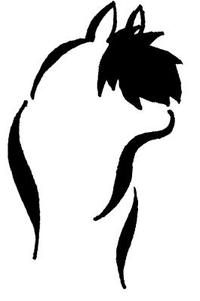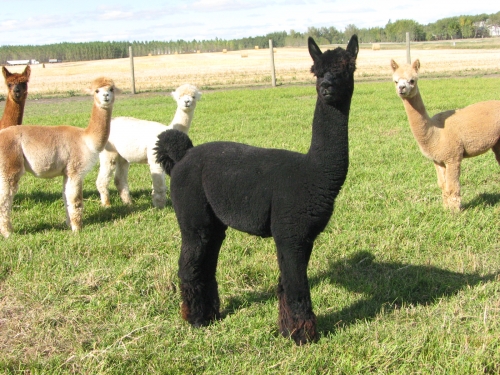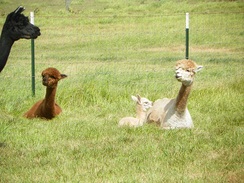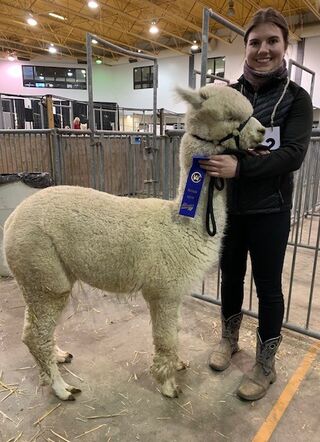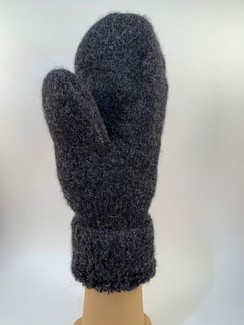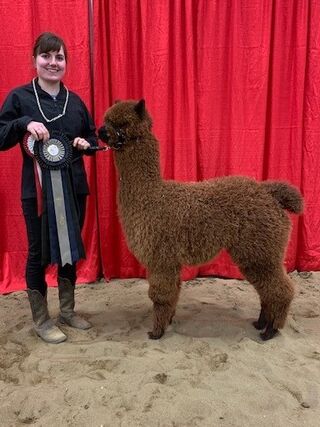About Alpacas
Alpacas are members of the camelid family. They were specifically bred by the Andean people of South America from the guanaco and vicuna. In fact, there is evidence of alpaca husbandry dating back over 5000 years ago! Alpacas were very important to the Incas. In fact, the cloth woven from alpaca fibre was used as currency and a means of class distinction, with only royalty allowed to wear the finest of alpaca cloth.
Alpacas arrived in Canada in the late 1980s and their numbers have continued to grow. They are a gentle yet curious animal with a keen intelligence. Adult alpacas weigh between 110 and 200 pounds and stand approximately 36" at the shoulder. Baby alpacas are called cria. The gestation of the alpacas averages 345 days! Cria usually arrive during the daylight hours and weigh between 14 and 20 pounds. Twins are extremely rare.
Alpacas are herd animals and need at least one other alpaca for companionship. They use a communal dung pile which aids in parasite control and pasture clean-up. Alpacas love to lay in the sun!
One of the most important things you can do for your alpaca is to shear their fibre each spring. They will also often enjoy a dip in the kiddy pool or a good spray with the hose on those really hot days!
Alpacas are very efficient animals, with an acre of pasture often able to support 5-8 animals. Along with shade in the summer, they need shelter from the wind in the winter, such as a three-sided shelter, and good quality hay.
Alpaca fibre is amazing! It is up to 6 times warmer than wool, much more durable and, because it does not contain lanolin, is not irritating when worn close to the skin. It is soft as cashmere and comes in 22 natural colors. It breathes, wicks away moisture and resists odour. In short, alpaca fibre is a natural, environmentally friendly and renewable resource.
Alpacas arrived in Canada in the late 1980s and their numbers have continued to grow. They are a gentle yet curious animal with a keen intelligence. Adult alpacas weigh between 110 and 200 pounds and stand approximately 36" at the shoulder. Baby alpacas are called cria. The gestation of the alpacas averages 345 days! Cria usually arrive during the daylight hours and weigh between 14 and 20 pounds. Twins are extremely rare.
Alpacas are herd animals and need at least one other alpaca for companionship. They use a communal dung pile which aids in parasite control and pasture clean-up. Alpacas love to lay in the sun!
One of the most important things you can do for your alpaca is to shear their fibre each spring. They will also often enjoy a dip in the kiddy pool or a good spray with the hose on those really hot days!
Alpacas are very efficient animals, with an acre of pasture often able to support 5-8 animals. Along with shade in the summer, they need shelter from the wind in the winter, such as a three-sided shelter, and good quality hay.
Alpaca fibre is amazing! It is up to 6 times warmer than wool, much more durable and, because it does not contain lanolin, is not irritating when worn close to the skin. It is soft as cashmere and comes in 22 natural colors. It breathes, wicks away moisture and resists odour. In short, alpaca fibre is a natural, environmentally friendly and renewable resource.
Thursday, January 23, 2020
